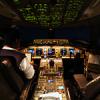Sign in to follow this
Followers
0

As airlines cut corners, will pilot fatigue run the industry into the ground?
By
Radzi, in General Aviation

By
Radzi, in General Aviation